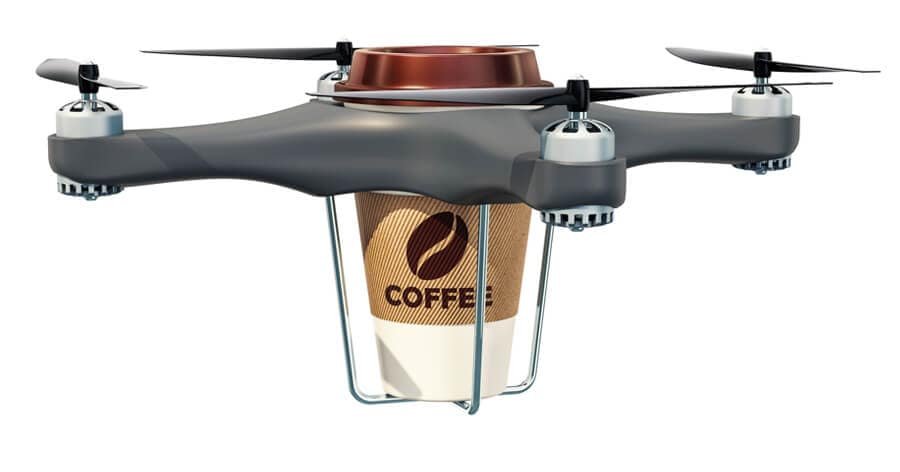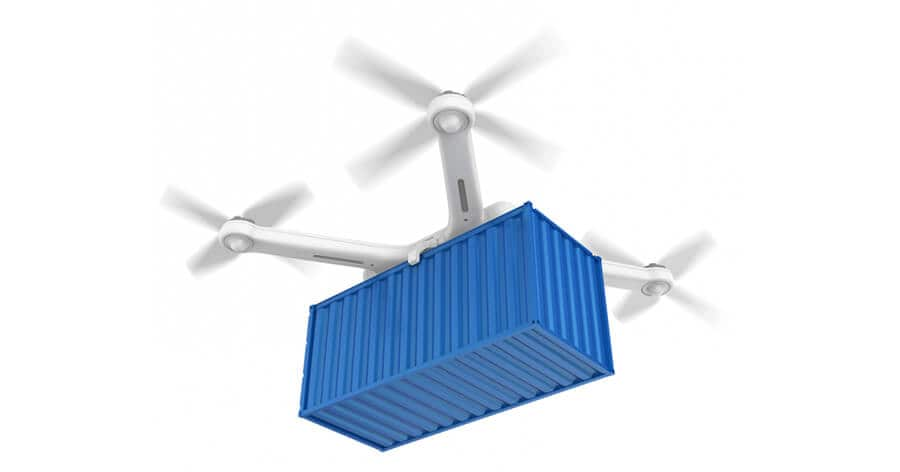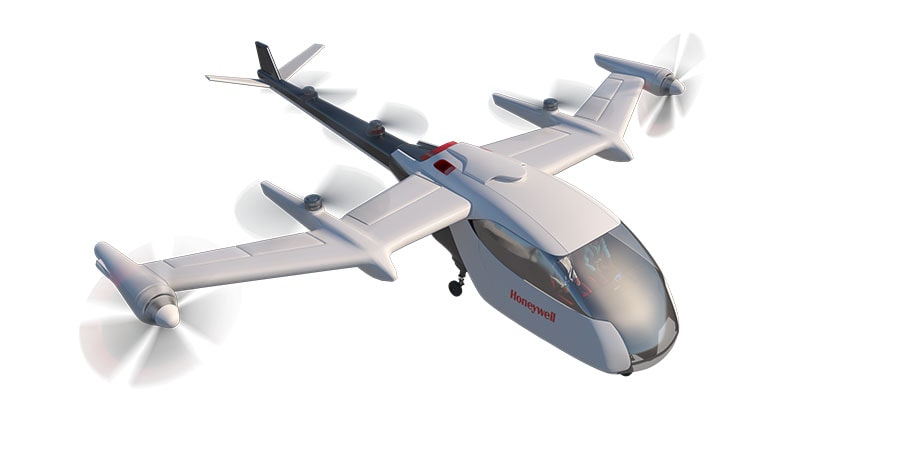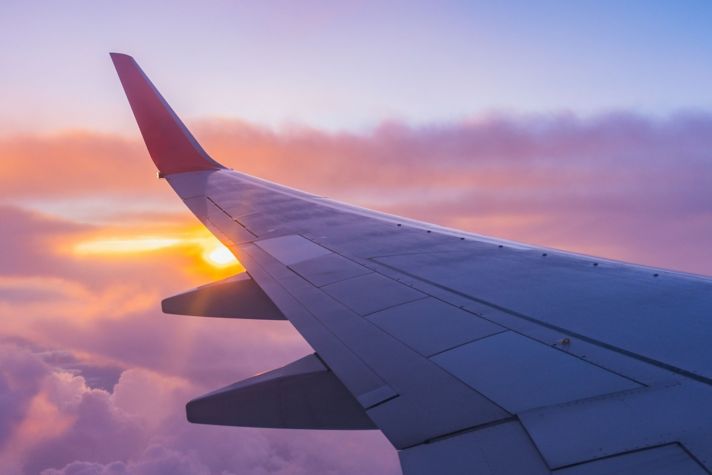-
Global
-
Africa
-
Asia Pacific
-
Europe
-
Latin America
-
Middle East
-
North America
- |
- BUSINESSES
- |
- Contact
- |
-
Global
-
Africa
-
Asia Pacific
-
Europe
-
Latin America
-
Middle East
-
North America
- |
- BUSINESSES
- |
- Contact
- |
You are browsing the product catalog for
You are viewing the overview and resources for
- News
- From Drones to Flying Taxis – the Future of Traffic is in the Air
From Drones to Flying Taxis – the Future of Traffic is in the Air
Get ready for takeoff: Food deliveries and work commutes might be airborne sooner than you think.
June 14, 2020
No pilot? No problem.
Between commercial delivery drones and flying taxis, the future of getting around and getting things is in the sky.
Our new Unmanned Aerial Systems (UAS) business is packaging up innovation through technology, software, services and certification expertise to support manufacturers that make the vehicles and service providers operating them.
It may sound futuristic, but it is happening today.
According to Stephane Fymat, vice president and general manager of Honeywell’s Urban Air Mobility (UAM) and UAS, congestion and consumption are driving this market. “Especially in megacities, just commuting from one point of the city to the other can take a very long time,” he said. “As you have more people traveling, you’re forced to look at new ways to satisfy that.”
And the consumption side is all about shopping. “The expectation of getting things delivered more quickly is going up and so is the need for new ways to deliver goods,” said Stephane.
Not to mention the impact of Covid-19, which has made it more important to minimize contact with people. Unmanned Aerial Vehicles (UAV) make that possible.
In terms of technology, there are a few things happening. First, electrification. “Just as we now have electric cars whereas we used to just have gas cars, the same thing is coming to the aerospace industry through better motors, batteries, electric storage and distribution systems,” said Stephane. Second, the advanced software and algorithms and AI machine learning is contributing to a roadmap where you no longer necessarily need to have a pilot in the aircraft. And finally, connectivity that is as good in the air as it is on earth, which enables us to remotely communicate, manage and fly vehicles from the ground.
“Between electrification, software and connectivity, you have some of the technology enablers to create vehicles that are semi-autonomous, electrically powered so they're quiet and sustainable for the environment and then meet that demand for new ways of traveling and new ways of delivering goods and services.”
Here are three ways manufacturers and service providers are bringing unmanned air vehicles to life.
Delivering small packages

What it is: Get packages delivered to your door from the air. It typically replaces a food or small package delivery that would normally come through a delivery person.
Status: Toilet paper and dinner dropped off by drone at your front door is happening in small pockets today. This type of small package delivery is at an inflection point because the tech is getting mature and there are substantial trials happening.
What needs to happen: Policy and airspace issues need to be resolved such as Beyond Visual Line of Sight (BVLOS) laws. Right now, someone has to be controlling the drone 100% of the time. With BVLOS range drone delivery, you can fly further and one operator can control many drones or highly autonomous systems. In terms of the tech stack, it is partially ready, but there’s more to be done to detect and avoid things like clothes drying on a line.
When will we use it: If you live in Virginia, you can order a coffee and muffin by drone. It will likely take more time for airspace to open up enough to make this a reality everywhere.
Delivering big packages

What it is: This is cargo delivery between 250 and 1,000 miles, which can help speed up how quickly packages reach their destination and shows potential in getting goods to sparsely populated areas where road infrastructure is lacking. It’s about speeding up the supply chain, making way for a fully autonomous logistics
Status: There are about half a dozen demonstrators around the world of the intermediate stage of autonomous cargo in the United States, Europe and China.
What needs to happen: There are similar policy needs for airspace and access as with small packages, but with larger vehicles, they need to be integrated into existing airspace systems.
When will it be a reality: There are prototypes flying today. This might happen as quickly as drone delivery, thanks to the push for ecommerce and instant gratification that comes with getting your orders fast. Even more promising is an interim step with a simplified vehicle that has a certain level of autonomy, requiring only single pilot.
Transporting people

What it is: Urban Air Mobility (UAM) is the aviation industry term for on-demand and automated passenger transportation, typically without a pilot.
Status: There have been demonstrations of this for a while and the Federal Aviation Administration (FAA) says there are about a dozen of these in various stages of being certified.
What needs to happen: On the technology side, batteries will have to get better to be able to handle flexible operations in all kinds of weather and have energy reserve. Vehicle design will have to be improved – you know how every commercial plane today looks the same. Not so with UAMs – there is a lot of creativity going into this work. They will have to be autonomous to be affordable as a pilot per vehicle would be cost prohibitive. Finally, the infrastructure must happen. In order to not depend on airports and heliports, passenger carrying networks will have to be ramped up and vertiports constructed.
When it will be a reality: This will take a little longer than packages due to gaps in infrastructure, technology and regulations. The stakes are higher when you’re carrying humans over urban environments, but the road in the sky is being paved to make it possible.
Copyright © 2025 Honeywell International Inc.




